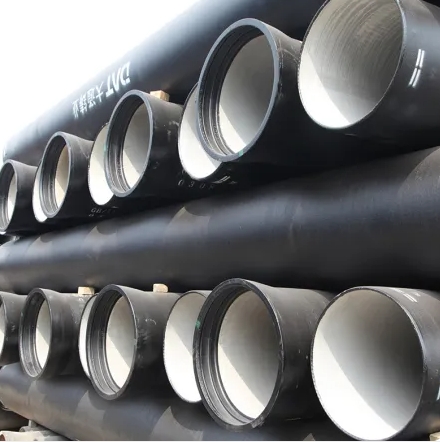What is the difference between iron pipe and ductile iron pipe?
Deciphering the Distinction: Iron Pipes vs. Ductile Iron Pipes
In the world of infrastructure and plumbing, the choice of materials is a pivotal decision that impacts durability, longevity, and overall performance. Iron pipes and ductile iron pipes are two prominent options, each with its own set of characteristics and applications. Understanding the differences between these pipes is essential for making informed choices in construction and plumbing projects. In this article, we unravel the dissimilarities between iron pipes and ductile iron pipes, shedding light on their respective advantages and applications.
Iron Pipes:
Iron pipes, often referred to as cast iron pipes, have been used in plumbing and construction for centuries. They are primarily composed of iron and carbon, with traces of other elements to enhance certain properties. Cast iron pipes were widely used in water distribution, sewer systems, and drainage systems due to their relative strength and durability.
Ductile Iron Pipes:
Ductile iron pipes, also known as ductile cast iron pipes or simply DI pipes, are an evolution of traditional cast iron pipes. They retain the strength and durability of cast iron while introducing improved properties. The term "ductile" indicates that the material is more flexible and less brittle, allowing it to undergo deformation without fracturing.
Key Differences:
Composition:
Iron Pipes: Iron pipes are predominantly made of gray cast iron, which is characterized by its gray appearance and brittle nature.
Ductile Iron Pipes: Ductile iron pipes are made from a type of cast iron that contains small amounts of magnesium, resulting in a more ductile and flexible material.
Strength and Flexibility:
Iron Pipes: Gray cast iron is relatively brittle and lacks the flexibility of ductile iron.
Ductile Iron Pipes: The addition of magnesium to the iron alloy in ductile iron pipes imparts greater flexibility and resistance to bending and deformation. Ductile iron pipes can withstand external forces and pressures more effectively.
Mechanical Properties:
Iron Pipes: Gray cast iron has lower tensile strength and impact resistance.
Ductile Iron Pipes: Ductile iron pipes exhibit improved tensile strength and impact resistance, making them more capable of handling stress and shocks.
Corrosion Resistance:
Iron Pipes: Traditional cast iron pipes are susceptible to corrosion, particularly in environments with aggressive or acidic conditions.
Ductile Iron Pipes: Ductile iron pipes are coated with protective linings, such as cement mortar or epoxy, to enhance their corrosion resistance and extend their lifespan.
Weight:
Iron Pipes: Cast iron pipes are generally heavier compared to ductile iron pipes.
Ductile Iron Pipes: Ductile iron pipes are lighter in weight, which can simplify transportation, installation, and handling.
Installation:
Iron Pipes: Due to their brittleness, cast iron pipes can be more challenging to cut and connect during installation.
Ductile Iron Pipes: Ductile iron pipes are easier to handle, cut, and connect, thanks to their greater flexibility and reduced risk of fracturing.
Applications:
Iron Pipes: Cast iron pipes were historically used in water distribution, drainage, and sewer systems. However, they are being phased out in favor of more modern and durable materials like ductile iron.
Ductile Iron Pipes: Ductile iron pipes have taken over many applications where traditional cast iron pipes were once used. They are extensively used in water distribution, wastewater systems, industrial processes, and even as components in infrastructure projects.
Advantages of Ductile Iron Pipes:
Durability: Ductile iron pipes have a longer service life due to their improved resistance to bending, deformation, and external forces.
Corrosion Resistance: The protective linings used on ductile iron pipes enhance their resistance to corrosion, ensuring a longer lifespan.
Versatility: Ductile iron pipes are suitable for various applications, from water distribution to industrial fluid transport, thanks to their flexibility and strength.
Ease of Installation: Ductile iron pipes are easier to handle, cut, and connect, streamlining the installation process.
Reduced Weight: The lighter weight of ductile iron pipes simplifies transportation and handling, reducing installation costs.
Conclusion:
While both iron pipes and ductile iron pipes have been used in construction and plumbing applications, the advancements in material science and engineering have paved the way for improved solutions. Ductile iron pipes, with their enhanced strength, flexibility, corrosion resistance, and ease of installation, have largely taken over the roles once held by traditional cast iron pipes.
In modern construction and infrastructure projects, the advantages offered by ductile iron pipes are undeniable. They not only provide longevity and durability but also contribute to more efficient installation processes and reduced maintenance costs over the long term. As technology continues to evolve, materials like ductile iron contribute to the development of more resilient and sustainable built environments.


Comments